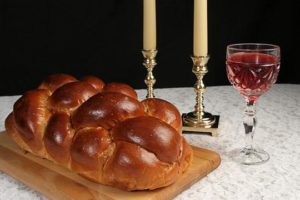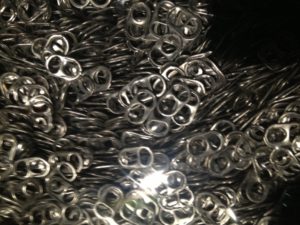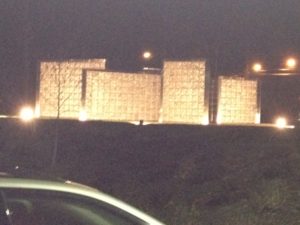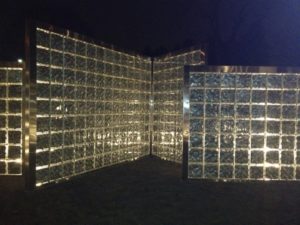The evening started with a family ritual. My husband and I had been invited to attend a Friday night Shabbat dinner at a friend’s house. I felt honored to be included in what, for this family, is a weekly event. Prayers and blessings were chanted by the hostess, her husband, and her 94 year-old father. I was wishing I understood what the words meant, but the intimacy and celebratory nature of the meal needed no translation. Ritual elements such as the lighted candles, two loaves of challah bread, and the wine communicated the specialness of the occasion.
 The hostess’s father was the honored guest, a remarkable man who talked easily of his life in the Nazi concentration camp in German-occupied Poland and of his journey to freedom after the war. As the meal was ending, our hostess invited us to drive to the Jewish Community Day School where she is the principal, to see the new Holocaust Sculpture on the school grounds. The project has taken over a dozen years, begun when a social studies teacher was searching for a way to communicate to his students the concept of six million Jews dying in the Holocaust. How could they, and we, understand the reality of such a humungous number?
The hostess’s father was the honored guest, a remarkable man who talked easily of his life in the Nazi concentration camp in German-occupied Poland and of his journey to freedom after the war. As the meal was ending, our hostess invited us to drive to the Jewish Community Day School where she is the principal, to see the new Holocaust Sculpture on the school grounds. The project has taken over a dozen years, begun when a social studies teacher was searching for a way to communicate to his students the concept of six million Jews dying in the Holocaust. How could they, and we, understand the reality of such a humungous number?
At the teacher’s suggestion, the class began collecting tabs from aluminum cans, and years later, with help from parents and the larger community, the school amassed six million tabs.

Next the school and its supporters searched for a way to display them in a meaningful way and the memorial, “Keeping Tabs” was created. An artist worked with the children to design the sculpture. The one that was chosen was a fractured Jewish star, laid out in such a way as to create a maze for visitors to walk through. Nine hundred and eighty glass blocks were then filled with the tabs and arranged in towers of varying heights.
Seeing the memorial at night from a distance, the lit structures seemed to me a cityscape of ancestral skyscrapers. Walking up the hill from the parking lot on the curved pathway I felt the expectation that I would soon be visiting a sacred site.

Upon entering, each narrow corridor offered different angles and perspectives and a play of light and shadow. Close up, the individual tabs in each glass window, mostly silver, with an occasional red or green one, brought tears to my eyes as I experienced each tab standing in for a person, a life snuffed out forever due to hatred and the evil of attempted genocide. I thought of the enormity of the world’s grief for these lives and all the lives that would have come from each of them.

Since single human bodies are not built to hold such overwhelming sorrows, the Sculpture does its sacred duty, helping us to honor those people who were lost and provide comfort to those left behind. The Hebrew saying and its translation over the doorway is a prayer for us all. –Hazak, hazak, v’nitkhazek — Be Strong, Be Strong, and May We Be Strengthened.” Strong enough to stick to our resolve to never allow such an atrocity again.
The Jewish Chronicle – Holocaust sculpture dedication draws large crowd

